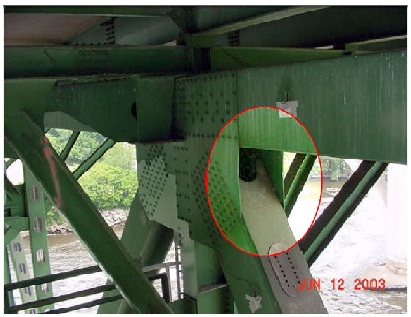Related Resources: analysis
Incorporating Engineering Ethics for the Credibility of FEA Results
Engineering Analysis Resources
Finite Element Analysis (FEA) is one of the most frequently used methods for design and development of an engineering product. Its benefits range from faster design development, cost savings and innovation in design. Over the years now, this digital design approach is developed extensively to model complex physics with accuracy. However, it has to be very well understood that despite the improvements in solver capabilities, its credibility is entirely based on the engineering judgments made by the analyst. It isn’t simply a tool that will work on its own, once you upload the geometry.
A large number of constraints are required to be defined based on physics principles. One has to realize that FEA should be considered as a third dimension required in product design along with theoretical and experimental validations. Most often though, engineering consultants make use of false approaches to fulfill client requirements; approaches that often affect the credibility of FEA.
The question on the credibility of finite element analysis can be answered by incorporating the principles of engineering ethics to ensure that the potential of FEA is not in the wrong hands. An organization involved in providing engineering services has to make sure that the team responsible for executing FEA projects takes their profession ethically.
Why Engineering Ethics?
The power of engineering is capable to transform and improve human life and bring benefit to the society. When in wrong hands, the results can be dramatically adverse and anti-societal. Being a member of this distinct profession, engineers are expected to have highest standards in honesty and integrity.
Engineering Ethics is thus a system of moral principles that every individual in engineering profession should follow. Rather than forcing the results to align with the client requirements, the services provided by engineers should be fair, honest and must be focused on public safety and welfare. Neglecting the importance of design safety could lead to tragic disasters.
An iconic example of an engineering disaster could be the collapse of I-35W Mississippi River Bridge in August 2007; or the Space Shuttle Columbia disaster in 2003, which occurred due to an unexpected disintegration of the shuttle, resulting in the death of all astronauts on-board.

Source: Collapse of I-35W Mississippi River Bridge

Picture taken in June 2003, released by the National Transportation Safety Board, showing bowed gusset plates Source: Wikipedia
In fact, the need for ethics in engineering was realized in late 90’s, giving rise to the development of societies that established fundamental canons or codes of ethics in engineering.
The fundamental codes as defined by National Society of Professional Engineers (NSPE) are to:
- Hold paramount the safety, health, and welfare of the public.
- Perform services only in areas of their competence.
- Issue public statements only in an objective and truthful manner.
- Act for each employer or client as faithful agents or trustees.
- Avoid deceptive acts.
- Conduct themselves honorably, responsibly, ethically, and lawfully so as to enhance the honor, reputation, and usefulness of the profession.
Engineering Ethics in FEA
Co-relating these codes with the present digital design approach can fairly improve the confidence and credibility of the finite element analysis, ensuring the avoidance of engineering disasters. While an FEA model is developed with number of assumptions, it does have a slight variation in resembling real world conditions. One has to deal with number of unknowns such as exact loading condition on the exterior surface of the geometry modeled. As such, validating FEA results are of prominent importance to ensure virtual and real conditions are well in-sync with each other.
Moreover, since the process involves converting the geometry into number of small elements, meshing plays an important role in deciding the result accuracy. The more finer the mesh, the more realistic and accurate the solution will be. But the accuracy again comes with a cost of more computational time, as more number of equations will be required to be solved due to increased number of elements and nodes.
As an FEA specialist, one has to ensure that the process of product design evaluation is executed ethically, considering all the constraints, physics principles and engineering judgments. A technical expertise in the working domain is a must, and no projects shall be undertaken that fall outside the expertise level. An ethical approach should involve encouraging clients to consider experimental validation as gold standard for a particular design. FEA is not a replacement to prototyping tests, but rather a complimentary tool to reduce number of prototype development and shorten the design development cycle.
Extending the second and third ethics code closely resembles the ethical practice an engineer should abide by to execute digital design development through FEA.
Following are the excerpts from the detailed ethics codes defined by NSPE:
Engineers shall perform services only in the areas of their competence.
- Engineers shall undertake assignments only when qualified by education or experience in the specific technical fields involved.
- Engineers shall not affix their signatures to any plans or documents dealing with subject matter in which they lack competence, nor to any plan or document not prepared under their direction and control.
- Engineers may accept assignments and assume responsibility for coordination of an entire project and sign and seal the engineering documents for the entire project, provided that each technical segment is signed and sealed only by the qualified engineers who prepared the segment.
Engineers shall issue public statements only in an objective and truthful manner.
- Engineers shall be objective and truthful in professional reports, statements, or testimony. They shall include all relevant and pertinent information in such reports, statements, or testimony, which should bear the date indicating when it was current.
- Engineers may express publicly technical opinions that are founded upon knowledge of the facts and competence in the subject matter.
- Engineers shall issue no statements, criticisms, or arguments on technical matters that are inspired or paid for by interested parties, unless they have prefaced their comments by explicitly identifying the interested parties on whose behalf they are speaking and by revealing the existence of any interest the engineers may have in the matters.
While it is certain that increasing number of design tests are carried out using FEA models, the question on its credibility is completely dependent on the analyst executing the project. The software is bound to give results, but the usefulness of these results can only be acclaimed once they are verified using experimental validations. However, tweaking the simulation results to meet project requirements, and not being truthful in professional reports can prove highly disastrous.
Executing projects beyond expertise level and lack of knowledge can lead to the development of product designs that work against public welfare and safety. Adopting the principles of engineering ethics in such case can prove to be highly supportive and improve the quality in simulation results, which otherwise is approaching a state of inconsistency, unreliability and illegitimacy.
About Author:
Bhaumik Dave is a Sr. FEA Consultant at Hi-Tech Outsourcing Services. He has applied his FEA expertise across several highly complex and big scale projects, consequently managing to seamlessly deliver as per the client requirements.
Related